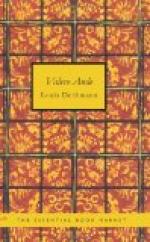“Not only is there
an art in acquiring knowledge but also a rarer
art in imparting it
to others.”
The first question, then, which will naturally arise in the mind of the reader will be:
What is This Method of Regeneration?
The reply to this question is in reality a simple one, but in order to explain and define the word “Regeneration” from a purely scientific standpoint, it will be necessary to cite the results of the author’s researches and to outline his method of healing by regeneration, showing how he purposes to lead the way from a dark past and a dull present into a brighter future.
Before doing so, however, it may perhaps conduce to a better understanding if I quote from the remarks of an eminent local authority on the chemical composition of the body—a subject “new,” as it appears, to the general medical practitioner of the day though, for over a quarter of a century freely expatiated upon by the great Biologists of the period.
The extract is taken from a recent article by Assistant Surgeon General Dr. W.C. Rucker, of the United States Public Health Service, and reads as follows:
“Much of the advance of modern medicine has been accomplished through the development of physiological chemistry which is even yet a new science.
“Although so new, it is assuming such importance as to make it manifest that the physiology of the future will be written largely in terms of chemistry.
“We have come to realize that the body is in a literal sense of the word, a chemical laboratory. The foods we eat, the fluids we drink, the gases we breathe are complex chemical compounds which the body must take apart and put together again in such a way that the materials may be delivered in a shape that will enable the cells to store them. It is then the business of the cells to utilize these materials for TISSUE BUILDING and in the production of energy, in the form of work and heat. The body manufactures different kinds of products, some beneficial, others harmful. Thus for example, excessive muscular effort throws into the bloodstream fatigue products that are poisonous. A person utterly tired out is really suffering from acute poisoning. On the other hand, to resist invasion by infectious diseases, the body manufactures anti-poisons that kill the enemy germs—making in other words, its own medicine.”
The physical processes here mentioned by Dr. Rucker are fully explained in my book, “Dare to be Healthy,” chapter VI, VII, VIII, and the natural principles involved have been practiced by me for over 30 years. I mention the fact simply as corroborative evidence of the authenticity and value of the work shortly to be published.
“Art may err, but Nature cannot miss,”—is an aphorism attributed to the poet Dryden. It adequately supports Dr. Rucker’s wise, significant and timely pronouncement and reminds me of an illustrative incident recorded in connection with the world famed physician Boerhaave of Leyden,—Holland’s chief centre of learning—who lived some 250 years ago, when doctors knew less than at present of the circulation and functions of the blood.




